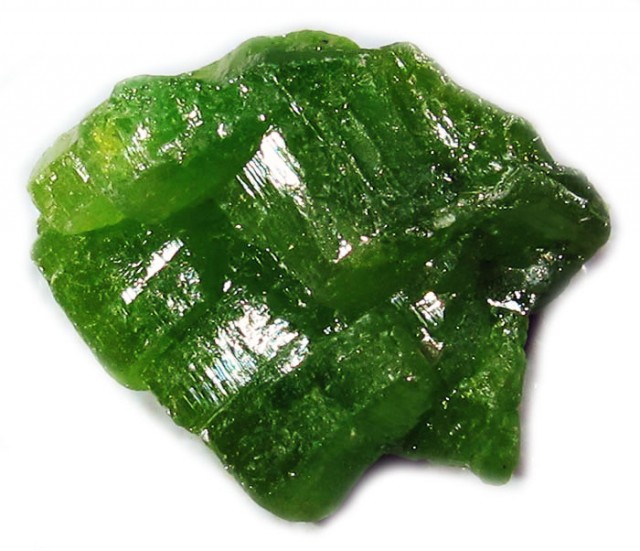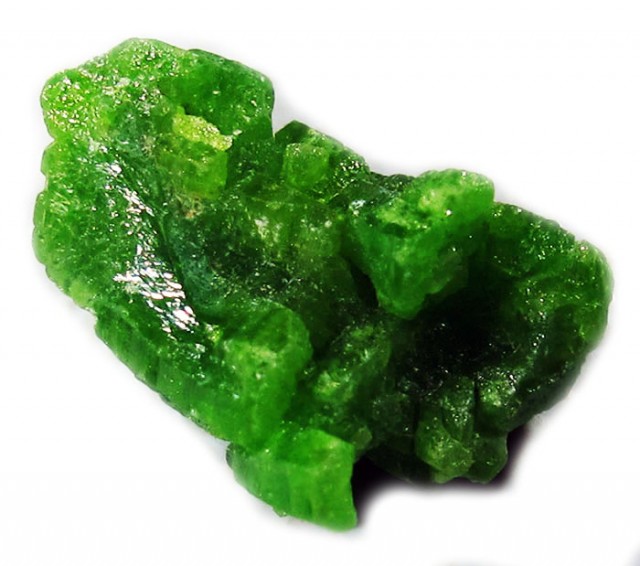
パイロモルファイト宝石:特性、意味、鉱物情報
 パイロモルファイトは、アパタイト族に属する半透明の鉱物です。色は様々で、明るいものも多くありますが、鮮やかな緑やオレンジ色で知られています。これらの鮮やかな 鉱物標本はコレクターに人気があり、特にアップルグリーンの結晶や、オレンジと緑の両方が見える原石は人気です。
パイロモルファイトは、アパタイト族に属する半透明の鉱物です。色は様々で、明るいものも多くありますが、鮮やかな緑やオレンジ色で知られています。これらの鮮やかな 鉱物標本はコレクターに人気があり、特にアップルグリーンの結晶や、オレンジと緑の両方が見える原石は人気です。
パイロモルファイトは宝石ですか?はい!ファセットカットされることは少ないですが、宝石や鉱物の世界では今でもよく見かけます。とはいえ、コレクターや愛好家の方がよく知っているかもしれません。
この過小評価されている、心を高揚させる宝石を手に入れてみませんか?このガイドでは、パイロモルファイトの鉱物情報、治癒効果、価格など、あらゆる詳細をご紹介します。
パイロモルファイト石について
パイロモルファイトは、緑、黄色、オレンジ、茶色、さらには白から無色まで、様々な色合いを持つ半貴石です。「緑鉛鉱石」とも呼ばれ、宝石や水晶の世界以外では鉛の採取にのみ利用されています。
この鉱物には様々な名前があり、詳しくは歴史のセクションで説明します。ここでは、その多くの呼び名のいくつかをご紹介します。
ムスコイデ
ポリクローム
ブリュワルド
トラウベンブレイ
セクサンギュライト
名前といえば、 pyrはギリシャ語で「火」を意味することをご存知かもしれません。ですから、パイロモルファイトが牡羊座、獅子座、射手座といったすべての火の星座の星座石であることは驚くことではありません。また、火星の惑星の星石でもあります。しかし、興味深いことに、このクリスタルは火と土の両方の性質と関連付けられています。
鉱物的に言えば、パイロモルファイトは何から構成されていますか?
パイロモルファイトの仕様と特徴
パイロモルファイトは鉛、塩化物、リン酸から構成され、化学式はPb5(PO4)3Clです。六方晶系リン酸塩の中でも、より大きなアパタイトグループに属します。
パイロモルファイト鉱物は、バナジン鉱やミメタイトとも系列を形成します。ミメタイトはパイロモルファイトと非常によく似ており、区別がつかない場合も少なくありません。
パイロモルファイトは結晶を形成するのが一般的ですが、腎臓形(レニフォーム)や球形(グロブラー)の塊、苔状のドゥルージー(晶洞)を形成することもあります。前述の初期の名称の一つであるトラウベンブレイは、ブドウ状結晶の形態にちなんでドイツ語で「ブドウ形」を意味します。
パイロモルファイトの最も有名な性状は、互いに積み重なった柱状の樽型結晶の枝分かれしたグループを形成するものです。
しかし、パイロモルファイトの結晶は、放射状の針状、ピラミッド状、両錐状、スプレー状、ホッパー状など、様々な独特な形状をとることがあります。結晶の両端の先端は、中空、蜂の巣状の穴、尖った形状など、様々な形状があります。
残りのパイロモルファイト鉱物データは次のとおりです。
モース硬度:3.5~4
色: 薄緑から濃い緑、草の緑、黄色、オレンジ、茶色、茶緑色、灰色、白、無色。緑とオレンジの多色になることもあります。
結晶構造:六方晶
光沢: 樹脂状、準金剛光沢、油状、またはガラス状
透明性:透明から半透明
屈折率:2.042-2.059
密度:6.5~7.1
へき開:不完全/不良、部分的に[1011]方向(途切れている)
骨折:不均一/不規則または貝殻下骨折
縞模様:白
発光:時には蛍光 - SW-UVおよびLW-UVでは黄色からオレンジ色
多色性:弱いまたは観察できない
パイロモルファイトには色々な種類があるんですか?もちろんありますよ!
パイロモルファイトの種類
パイロモルファイトにはいくつかの種類があり、以下に詳しく説明します。
コリーアイト:カルシウムと約4.1%の酸化バナジウムを含む黒色の変種。1889年にスコットランドでジョン・ノーマン・コリーによって発見された。
ヌシエライト:少量のヒ酸塩を含む茶色、黄灰色、または白っぽい変種。1836年にフランスのヌイシエ鉱山で発見されたことにちなんで名付けられました。
ポリスフェライト(カルシウム含有パイロモルファイト) :無色でカルシウムを豊富に含む希少な変種で、化学式はCa2Pb3(PO4)3Cl。球状の形状からその名が付けられました( polyは「多くの」、 sphairaは「球」の意味)。
ヒ酸塩を含むパイロモルファイト:光沢のある黄色から濃いオレンジ色のタイプで、米国アイダホ州のバンカーヒル鉱山で有名です。
ポリスフェライトをパイロモルファイトの変種ではなく、むしろリン酸化物の一種と考える人もいることに注意する必要があります。

パイロモルファイトの意味と歴史
一般的に、パイロモルファイトは新たな始まり、希望、そして開放性を象徴します。この石のモットーは「古いものは捨て、新しいものを受け入れる」と言えるでしょう。
パイロモルファイトの精神的な意味は、長期にわたるストレスからの回復、他者との失われたつながりの復活、そして未来への集中など、2020年以降(またはむしろ隔離後)の世界の多くの関連する側面に結びついています。
歴史
「パイロモルファイト」という名称は、ギリシャ語の「 pyr」 (火)と「 morphe」 (形)という2つの言葉に由来しています。溶融したパイロモルファイトの球状体は冷却時に再結晶化するため、この名が付けられました。ドイツの鉱物学者ヨハン・フリードリヒ・ルートヴィヒ・ハウスマンが1813年にこの名称を選びました。しかし、最初の発見はそれより数十年前に行われました。
以前にもいくつかの分析が行われていたが、最初の発見者はスウェーデンの化学者ヨハン・ゴットシャルク・ヴァレリウスで、1748年にドイツのザクセン州でパイロモルファイトを発見したとされている。
ワレリウスはこれを「緑色鉛石」を意味するgrön blyspat(グローン・ブリスパット)と「緑色鉛鉱物」を意味するMinera plumbi viridis(ミネラ・プランビ・ビリディス)という二つの名前で呼んでいました。それから数年後には、「緑色黒鉛」を意味するフランス語のmine de plomb verte(マイン・ド・プランブ・ヴェール)という名前も生まれました。
1761 年、ドイツの科学者クリスチャン・フリードリヒ・シュルツェが「緑色鉛鉱石」を意味するgrünbleierzと「褐色鉛鉱石」を意味するbraunbleierz という用語を考案しましたが、これらの用語は 30 年後に地質学者アブラハム・ゴットロブ・ヴェルナーによって考案されました。
もう一人のドイツ人化学者、マルティン・ハインリヒ・クラプロートは、1784年にこの鉱物の完全な化学分析結果を初めて発表しました。クラプロートはまたもや、「リン酸鉛」を意味する「 phosphosäurehaltig blei 」と「緑色鉛鉱石」を意味する「grün bleyerz 」という2つの新しい名前を導入しました。
なぜこんなにたくさんの名前がつけられているのでしょう?パイロモルファイトには実に多様な色と形があるため、地質学者がすべての標本が同じ鉱物であることに気づくまでには時間がかかりました。
パイロモルファイトとして発見された「新しい」鉱物には、他にも次のような名前があります。前のセクションで紹介した名前もいくつかあります。
ポリスフェライト(1832年、ドイツの鉱物学者アウグスト・ブライトハウプト)
ニュイシエライト(1836年、フランスの科学者バルエル・ダンハウザー)
ミース石(1841年、ブライトハウプト、ミース、ボヘミア、現在のチェコ共和国で発見)
チェロキーン(1857年、チャールズ・アップハム・シェパード、アメリカの鉱物学者、米国ジョージア州チェロキー郡で発見)
プルンバインとセクサグリット(1863; ブライトハウプト)
コリエット(1927年、スコットランドの科学者ロバート・ブラウン)
明らかに、パイロモルファイトには様々な時代にふさわしい名前が付けられてきました。しかし、パイロモルファイトは何にふさわしいのでしょうか?
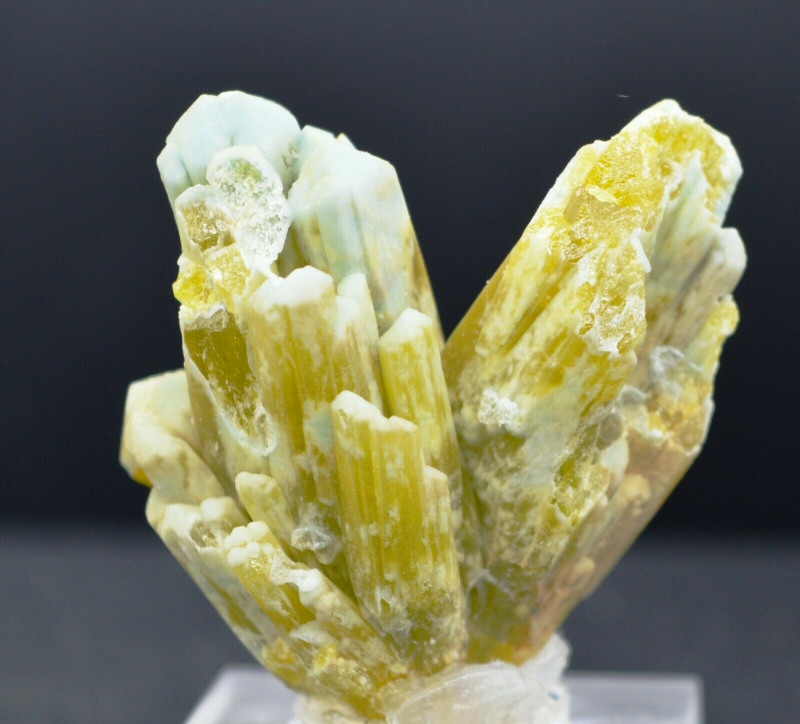
パイロモルファイトの治癒特性
色と内なるエネルギーから判断すると、すべての宝石はヒーリングストーンとなり得ます! ピルモルファイトは、色によってそれぞれ独自のパワーを持っています。
無色または白色のパイロモルファイトは、他の白色の宝石と同様に、精神を浄化し、他のクリスタルのエネルギーを増幅させる働きがあります。一方、オレンジ色のパイロモルファイトは創造性を高めます。
グリーンパイロモルファイトには、繁栄を引き寄せ、豊かさを顕現させる力があります。あなたはガーデニングが得意ですか?パイロモルファイトは、ガーデニング愛好家や自然愛好家にとっても素晴らしい相棒となるでしょう!
パイロモルファイトは、身体的、感情的、チャクラのヒーリングにどのように使用されますか?
身体の治癒
パイロモルファイトが効果があると言われる病気や身体的な症状は、以下の通りです。
寒気
歯周病
ビタミン吸収
眼精疲労
筋力と協調性
空腹感と代謝機能
頭痛
高血圧
胃の病気(例:IBSまたはセリアック病)
感情的な癒し
方向性を見失ったり、やる気が出なかったりしていませんか?パイロモルファイトは、夢を実現するための目的意識と忍耐力を与えてくれると言われています。また、楽観的な姿勢と感情的な開放性も促してくれるでしょう。
暗い時期から立ち直ろうとしているなら、この支えとなり、癒しを与えてくれるクリスタルは、癒しは可能であることを思い出させてくれます。クリスタルヒーラーは、癒しの道のりのあらゆる障壁を打ち破るためにこのクリスタルを使用しています。
チャクラヒーリング
チャクラは、エネルギーがスムーズに流れるための体中のエネルギーセンターです。もしチャクラが詰まっているなら、チャクラストーンがそれを開く力を持っています。パイロモルファイトは黄色と緑の色合いが一般的で、太陽神経叢(黄色)と心臓(緑)のチャクラを調和させるチャクラストーンと言えるでしょう。
太陽神経叢はアイデンティティと目的の中心であり、心臓は受容と愛を司ります。パイロモルファイトはこれらをバランスよく調和させ、情熱を目的へと結びつけ、自信を持って真の夢へと向かえるよう促します。
パイロモルファイト宝石の特性
パイロモルファイトの価値を決定する上で重要な宝石の特性は、色、カット、透明度、光沢です。
色
パイロモルファイトは異色性を持ち、純粋な場合は無色です。白色のパイロモルファイトも珍しくありませんが、最も一般的なのは緑色です。
白色の色合いは鉱床の酸化度の低い部分でより一般的であり、緑色の色合いは酸化度の高い部分でより一般的です。研究された緑色のパイロモルファイトの一つには、不純物として酸化鉄しか見られなかったため、これが着色剤である可能性が高いと考えられます。
しかし、パイロモルファイトの不純物や色は一定ではないため、結晶格子の局所的な欠陥が発色の原因であると考える人もいます。ただし、これは標本によって異なる可能性があります。
いずれにしても、一般的なパイロモルファイトの不純物には次のものがあります。
砒素
カルシウム
クロム
フッ素
ラジウム
バナジウム
最も価値の高いパイロモルファイトは、濃い緑色または黄色がかったオレンジ色をしています。
カット
パイロモルファイトは柔らかいだけでなく、その原石の結晶が非常に魅力的であるため、ファセット加工されることは一般的ではありません。
ファセットカットされた石は、やや硬めの黄色のプラムボガマイトが混ざった標本からカットされることが多いです。一般的なファセットカットはトリリオンシェイプとバゲットシェイプです。パイロモルファイトのカボションカットも稀に見られます。
ほとんどのパイロモルファイトジュエリーには原石の結晶が使用されています。
透明感と光沢
透明度と光沢はどちらも宝石全体の輝きに影響を与えます。透明なパイロモルファイトは希少で高値で取引されますが、透明度の高い結晶は価値が高くなります。
パイロモルファイトはダイヤモンドに匹敵する光沢(アダマンチン質)を呈することもあります。また、樹脂質、ガラス質、油脂質の場合もあります。ガラス質(ガラス質)または亜アダマンチン質のパイロモルファイトが最も価値があります。
私たちの手に渡る前に、パイロモルファイトはどのように形成されるのでしょうか?
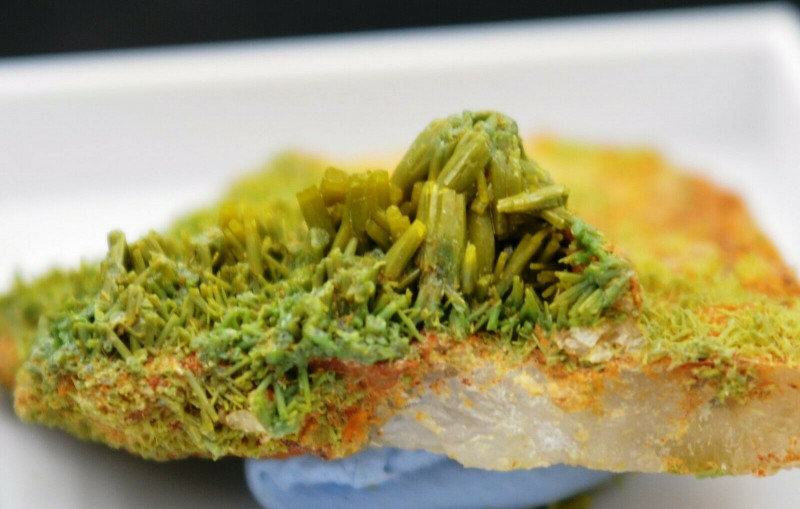
パイロモルファイトの形成と供給源
二次鉱物であるパイロモルファイトは、他の(一次)鉱物が変質することで形成されます。具体的には、可溶性の鉛鉱物がリン酸塩と融合してパイロモルファイトになります。
リン酸は肥料かもしれません!実際、鉛汚染された土壌などでは、鉛汚染を防ぐためにリン酸が添加されることがよくあります。リン酸は鉛をパイロモルファイトに変えるからです。これはパイロモルファイトを(ある程度)人工的に作る方法の一つです。
鉱山労働者は鉛鉱床の酸化された地域でパイロモルファイト石を見つけますが、パイロモルファイトは地理的にどこで見つかるのでしょうか?
採掘場所
パイロモルファイトのユニークな特徴の一つは、その「最高」の産地が一つや二つではないことです。一部の国には「ワールドクラス」(WC)の産地がありますが、ほぼすべてのパイロモルファイトの産地は、特定の種類のパイロモルファイトに特化しています。
カナダ —希少な母岩標本
中国 — WC | リンゴグリーン、光沢のあるもの。ドゥルージー模様。緑とオレンジ色。明るい黄緑色。
チェコ —明るい緑色、珍しい灰色のミーサイト球
フランス — WC | ドゥルージー; プリズマティッククラスター; 明るい黄緑色
ドイツ — WC | 大きく、茶色がかった、樽型
アイダホ州、アメリカ合衆国 — WC | 丸みを帯び、光沢のある、ヒ酸塩を含む。緑とオレンジ色。キラキラと輝く球状。黄緑色の結晶。黄オレンジ色の球状クラスター。
イタリア — WC | 黄色または黄緑色の花のようなヒヨケムシ。丸みを帯びた球形または乳頭状の
メキシコ —水晶クラスター。淡緑色でウルフェナイトを含む
モロッコ
ペンシルベニア州、アメリカ合衆国 —歴史的; オリーブグリーン
ロシア
スペイン
英国
ザンビア —大皿料理
販売中のパイロモルファイトをご覧になる準備はできましたか?それでは、価格面で期待できるものについてお話ししましょう。
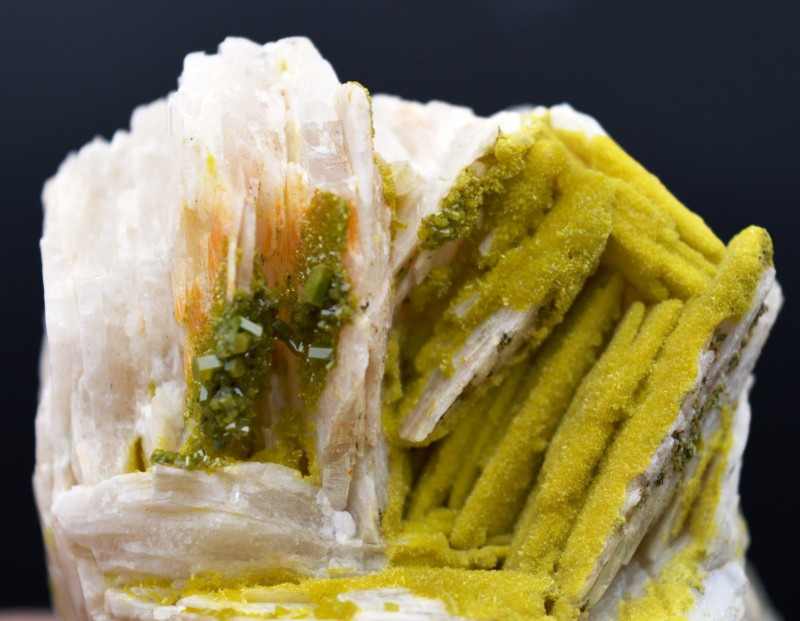
パイロモルファイトの価格と価値
パイロモルファイトのカラット単価は比較的お手頃です。ただし、密度(重さ)が高いため、同じカラット重量の他の宝石よりも結晶のサイズが小さくなることに注意してください。最高の原石は高さ3cmほどしかありませんが、15,000ドルから20,000ドルの値が付くこともあります。
ファセットカットのオプションは希少かつ価値が高く、1カラットあたり約 65 ドルです。
本当の多様性は、以下に示すさまざまな場所から採取されたパイロモルファイトの原石にあります。
中国:1カラットあたり0.25~2.50ドル
チェコ:1カラットあたり0.70~2ドル
フランス:1カラットあたり0.07~1.30ドル
ドイツ:1カラットあたり0.20~1.20ドル
米国アイダホ州: カラットあたり $0.60 ~ $5.50
英国:1カラットあたり1~5ドル
オーストラリア: カラットあたり $0.05 ~ $0.45
未加工のパイロモルファイト結晶ペンダントの価格は、結晶のサイズと金属のセッティングに応じて 15 ドルから 300 ドル以上まで幅広くなります。
パイロモルファイトのケアとメンテナンス
鉛中毒の可能性もあるため、パイロモルファイトの毒性について話し合うことが重要です。結晶に含まれる鉛は、摂取または吸入すると有毒ですが、展示用(ケースの有無にかかわらず)として保管することは全く安全です。触れた場合は、必ず手をよく洗ってください。
宝石のお手入れについてですが、パイロモルファイトは脆く、硬度が低いため、優しく扱ってください。
パイロモルファイトは、柔らかく埃のない布で拭くか、アイロン用洗剤に1時間以上浸け置きしてください。きれいになったら、水で洗い流し、自然乾燥させてください。
パイロモルファイトは、硝酸、炭酸水、水酸化カリウムとの接触を避けてください。他の宝石とは分けて保管してください。
あなたを熱くさせるパイロモルファイトはどれですか?
パイロモルファイトには様々な別名がありますが、その名前は、その刻々と変化する形状と燃えるような効能を完璧に反映しています。美しいグリーンの結晶は、心を落ち着かせ、支えてくれるエネルギーで空間を包み込み、燃えるようなオレンジ色のパイロモルファイトは、創造性と意志力を刺激します。ぜひお申し込みください!
Gemstone Encyclopedia検索
最新記事
レインボーラティスサンストーンは、様々な内包物によって3つのゴージャスな光学的効果を持つ長石の一種です。燃えるように鮮やかな色合いと格子模様が、コレクターにとって希少な宝石となっています。
12th Jan 2026
チューライトは、ゾイサイト鉱物ファミリーに属する、鮮やかなバラ色の色合いを示す希少なノルウェー産の宝石で、ジュエリーのセッティングやペンダントによく使用されます。
6th Jan 2026
記事のカテゴリ
How To's is where you will find helpful articles from gem Rock Auctions on how to cut gemstones, select gemstones and buy gemstones.
9記事数

